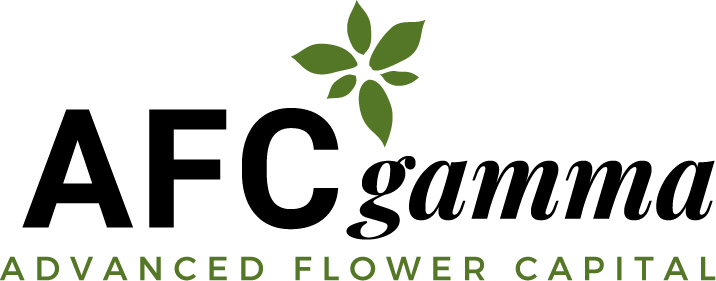Businesses often require outside capital to finance operating activities and to enable scaling and growth. Financing in the cannabis industry is notoriously challenging with regulatory obstacles at the local, state and federal levels. Recent market dynamics pose additional challenges for both financiers and cannabis operators.
We sat down with Travis Goad, Managing Partner of Pelorus Equity Group to learn more about Pelorus and to get his perspective on recent market trends.
Aaron Green: In a nutshell, what is your investment/lending philosophy?
Travis Goad: Our investment and lending philosophy is focused on being honest, upfront and doing what we say we’re going to do for both our borrowers and our investors. At Pelorus, we lend against cannabis-use real estate assets.
Every lender in this space is a hybrid between real estate and corporate lending. However, if you think about it as a political spectrum, with one side being pure real estate lending and the other pure corporate lending, Pelorus is as close as you can be to pure real estate lending in this sector while also being properly collateralized. What sets us apart from our recently launched lending peers is that we lend against the real estate asset value only, even though we’re collateralized by the real estate and license.
We lend between 60% to 75% of the value of the real estate, which means sponsors need to raise equity for the 25% to 40% remainder of the project cost. This allows us to be covenant-lite for our borrowers while giving them the flexibility to grow their business as they see fit.

The other lending options in the space are much different. While our lending peers may call themselves mortgage REITs, they really are based on a business development company (BDC) lending model. While they may lend borrowers as much as 150% to 180% of the real estate value, they will require significant financial covenants, require control of major decisions and most often want a board seat. We’ve seen this model severely hamstring growth of companies.
The third option available to sponsors is a sale-leaseback. In this structure, lenders will buy your real estate for 100% of the value, but require you to enter into a 15-to-20-year lease that increases 3% each year. There is a temporary benefit to this model from a federal tax perspective, but that will go away when 280E is addressed, either by descheduling cannabis or amending the tax code.
While this structure means you don’t have to raise equity, it gives up the most valuable asset cannabis companies have in the early stages of the industry. Once you sell this asset, it hampers optionality for sponsors – and in a fast-growing industry like cannabis – optionality is the most critical thing a company has. Pelorus’ structure allows maximum optionality, as well as the ability to lower your cost of capital as the industry matures.
From an investor standpoint, they should know that the BDC and sale-leaseback models are a lot riskier than our model. While we’ve seen those models work well in mature industries, we think the cannabis industry is too early-stage and too volatile to go that far out on the risk spectrum. We have the longest history in the space of deploying capital successfully and seeing it returned. Prior to making any loans, we spend a lot of time underwriting the company we’re working with, the real estate and the projections. We look for strong sponsors, great projects and attractive markets.
Before we entered the cannabis lending space, our team at Pelorus had more than 5,000 transactions under our belt, worth $5B, and we leveraged our decades of underwriting experience when starting the Pelorus Fund. As the first dedicated lender in the cannabis space, we have more data and experience than anyone in terms of transactional volume – we’ve looked at more than 2,000 deals and have made 71 deals, worth $468M. We know the intricacies of every market, the particular ordinances, what the costs should be, and utilize the data to help our borrowers succeed. Through our deals and sustained success, we’ve made a name for ourselves as the most trusted and efficient lender in the cannabis space.
Green: What types of companies are you primarily financing?
Goad: We finance construction and stabilized loans for a range of clients including MSOs, SSOs and ancillary companies. We don’t lend on outdoor cultivation, but are open to working with any cannabis-related business that has commercial real estate, strong financials and experience in the cannabis space. Today, our sweet spot is closing loans in the $10M to $30M per transaction range, but we can fund loans $100M+ and as low as $5M. Since 2016, we’ve financed 4.2M feet of cannabis-use properties for a total of $468M in loans – roughly 15% to 20% of the entire US market.
Green: What qualities do you look for in a cannabis industry operator or operating group?
Goad: We are meticulous in our underwriting process and underwrite the company, the real estate and the market. We’re one of the few lenders today that has capital to deploy, which has given us the opportunity to continue to take market share while also increasing the quality of our borrowers. Whether you’re an MSO, smaller state operator or ancillary business, we recognize quality across the sector. Brand affinity and shelf space are critical in this market, and we like working with companies that have a competitive edge in getting their branded product to customers. We try to target companies that offer a unique product, or have a unique position within the state they are located.
 To qualify for our lending program, borrowers need to own their real estate. If the sponsors own the real estate or intend to own the real estate, we offer two main lending products: we provide construction loans that range between 60% to 75% of the project that are typically 18-month terms; and more recently implemented, we also lend on fully stabilized assets that are cash flowing and operational up to 75% of the value and up to a 5-year term.
To qualify for our lending program, borrowers need to own their real estate. If the sponsors own the real estate or intend to own the real estate, we offer two main lending products: we provide construction loans that range between 60% to 75% of the project that are typically 18-month terms; and more recently implemented, we also lend on fully stabilized assets that are cash flowing and operational up to 75% of the value and up to a 5-year term.
By the time a borrower comes to us, they should already have a license (or be acquiring a license at closing), have their required equity raised to completely fund the project and have all local approvals to begin construction.
Green: Capital market dynamics have led to significant public cannabis company revaluations in 2022. How has this affected your business?
Goad: As far as how market dynamics have impacted our fund, we’ve been pretty insulated because we are a privately held company. From our inception, we’ve worked hard to create an innovative model, and have had many firsts. We were: the first dedicated lender in the cannabis sector; the first lender to become a private mortgage REIT; the first to be issued an FDIC warehouse line of credit; the first to get an investment grade rating; the first to issue an unsecured bond with institutional investors; the first to update our fund to a billion dollars. Amid all these firsts, we made a conscious decision not to go public. This has been one of the best decisions we’ve made and has shielded us from much of the market volatility we are seeing.
As for the broader market, we’ve seen our sponsors that are publicly traded impacted pretty significantly by the recent market dynamics. We’ve also seen flow-on effects for non-publicly traded firms. Our loan book is performing excellently, but we’re in a very challenging market for marijuana-related businesses to raise equity, making debt even more attractive. For most of our competitors, who chose to go public, they’ve been unable to raise much capital to deploy, whereas our market share is increasing and we continue to grow in this tough environment. We remain bullish on the sector in the medium/long term and are finding excellent opportunities to lend in this challenging environment.
Green: Debt on cannabis companies balance sheets have increased significantly in recent years. What is your perspective on that?
Goad: Increased access to debt capital markets is a sign of a maturing market. The U.S. cannabis sector has a great tailwind with growth of new markets, but it’s facing some significant headwinds tied to tax inefficiencies and inadequate state-level enforcement. All of these issues can be solved with political action, but so far that hasn’t happened and it’s causing pain in the industry. These industry dynamics are set against a broader macro backdrop of risk-asset repricing and increased volatility, which leads to outsized volatility in cannabis due to limited liquidity. That increased volatility has made it very challenging to raise equity in this market.
For companies that have strong assets on their balance sheet, they’re still able to access capital via the debt markets. This is creating clear winners and losers, as companies that choose to sell their real estate have significantly fewer capital raising options than those that choose to keep real estate assets on their balance sheets. Overall, this increased debt trend has been great for our business – our pipeline has increased rapidly and we’re able to lend to strong operators with solid assets at attractive rates for investors. Our fund continues to have inflows, and since we’re one of the few lenders with capital to deploy, we’re still open for business and deploying capital in this challenging environment.
Green: How does the lack of institutional investor participation in the cannabis industry affect your business?
Goad: The current regulatory environment impacts the type of investor that comes into this space. Rather than being dominated by institutions, this sector has largely been funded by retail investors and family offices. This has created challenges in aggregating large amounts of capital, both on the operator and the debt-fund side of the business. It can lead to delays in loan closings, as it takes borrowers a longer amount of time to raise the required equity to close their transaction. As we’re seeing with our publicly traded peer group, it can also lead to lenders having trouble raising capital to deploy. As for Pelorus, we’ve been very fortunate that our length of time in the industry and track record of successfully making loans and having them repaid has set us apart in fundraising. Our decision to stay private has been a critical factor in our fundraising success as well. Overall, the lack of institutional investor participation is a double-edged sword: the lack of liquidity has caused challenges broadly, but since we’ve had significant capital to deploy, it’s created great opportunities for us to make loans with attractive risk/returns in this challenging market.
Green: What would you like to see in either state or federal legalization?
Goad: Given the stalemate in the Senate and the sharp bipartisan divide, I don’t think federal legalization will happen during this administration. That said, there are incremental actions that the government should take to strengthen the cannabis sector. First of all, the Cole Memo needs to be reinstated to add additional protections for cannabis and cannabis-related businesses. As 280E has clearly been detrimental to the overall health of the cannabis industry, we also believe the tax code should be amended, or better yet, we should address the conflict between state and federal policy. We also need to get SAFE Banking approved in order to open up the cannabis sector to credit cards and potentially open up banking to the sector in a more material way. Unfortunately, there’s a choke point in the Senate to get SAFE Banking approved, since there needs to be 60 votes to be filibuster proof. And while there is some talk of SAFE Banking passing during the lame duck session, we are not holding our breath.
Green: What trends are you following closely as we head towards the end of 2022?
Goad: The biggest trends we’re following are on the legislative front (both federally and at state level), which heavily impact revenue and net cash flow growth for the industry. We’re following emerging state markets, such as Alabama and Mississippi, as well as current medical markets poised to transition to adult use in the near term, such as Missouri. The more addressable the population, the faster the industry can grow.
We’d also like to see current legal states address the often-heavy tax burdens that have led to additional challenges for legal businesses and kept illicit markets thriving. No state got everything right at the beginning, but we’re starting to see states address some of the inequities and harmful policies now. California has made some progress in this area, however there are many issues that still need to be addressed.
Federally, 280E is the other major headwind that needs to be addressed as extremely high tax rates are one of the biggest problems for the industry. We’d really like to see that addressed, as cannabis is the only new industry, I’m aware of in the U.S. that has had such disadvantages out of the gate.











